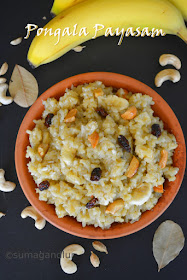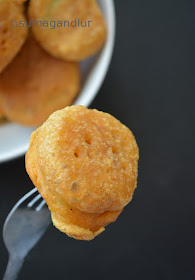Here is a simple and quick south Indian style rice idea using black gram / urad dal. This rice does not need even vegetables and does not involve any elaborate prep work or cooking. I saw the mention of this rice as part of a prasadam to be offered in a 'Rama Paarayan' book. To be honest, I had never heard about it before and I am still not sure if there is a standard version out there for this rice preparation. I went ahead with my own version keeping it simple and basic. I liked the rice and feel that it is a great idea when you have left over rice and looking for a quick meal option or have run out of vegetables.
Ingredients:
2 cups cooked rice (I used sona masuri rice.)
1 tbsp. whole black gram / sabut urad dal
1/2 tbsp. split chick peas / chana dal
1 to 2 tbsp. grated dry coconut
3 dried red chillies
Ingredients for tadka:
2 tbsp. oil
1 tbsp. peanuts
1 tsp. split chickpeas / chana dal
1 tsp skinned and split black gram / urad dal
1 tsp. mustard seeds
10 - 12 curry leaves
1/8 tsp. turmeric powder
3/4 tsp. salt or to taste
2 pinches of asafoetida powder

Method:
* Dry toast black gram, split chick peas, dry coconut and red chillies together on medium flame until the split chickpeas starts to change color to a reddish hue. Transfer the ingredients to a wide plate and let them cool. Grind the ingredients to a fine powder.
* Heat oil and add peanuts, split chickpeas, split black gram and mustard seeds in that order. When peanuts and split chickpeas turn golden brown, add curry leaves, turmeric and asafoetida and stir once. Turn off the stove and add the ground powder and salt. Stir well until the powder is coated with the oil and add the rice. Mix well until all the rice grains are coated well with the powder, breaking any rice lumps if present.
* The rice can be served immediately.

This goes to Blogging marathon #74, under the theme 'Bookmarked Recipes'. Check out the page to read what other marathoners are cooking.










































